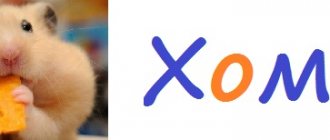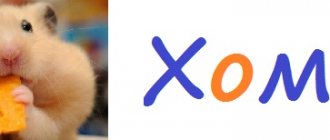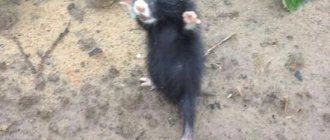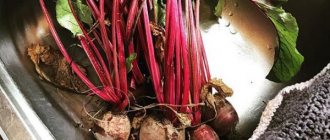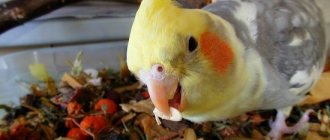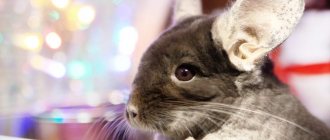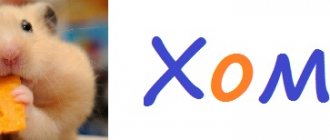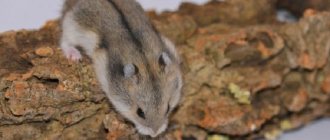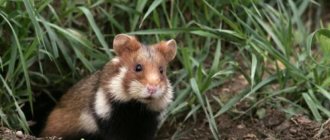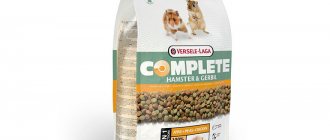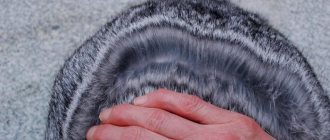The Djungarian hamster is a cute and funny animal that has become one of the most popular pets. But before you get such a pet, it is worth studying how the rodent lives in nature, where it lives, what it eats and how it reproduces.
This information will help create ideal home conditions for him. After all, if they are as similar to natural ones as possible, the hamster will feel comfortable and live longer.
Djungarian hamster: origin story
Djungarians are mammals that belong to the genus of hairy-footed hamsters from the Hamster family of the order of rodents. They were first described by the researcher Waterhouse in 1839. At that time, a few individuals lived in Syria. About a century later, another scientist Aharoni from Jerusalem managed to extract a female Djungarian hamster from the hole along with a litter of 12 cubs. Most of the family died during transport to England. Then 4 hamsters remained alive.
A little time passed, and the dwarfs began to actively reproduce. First they were used for laboratory research in England, then in the USA. After about 10 years, a whole population of Djungarian hamsters was formed. Rodents have been domesticated and are now very popular among animal lovers.
How to make a cage for a dwarf with your own hands
First you need to choose the material. Only non-toxic and durable elements are allowed to be used. A house for the animal can be built from unpainted boards or plywood, plastic, coconut shells and even thick cardboard. It is important to remember that homemade cages made from natural elements are short-lived, since the hamster will constantly sharpen their upholstery and walls with his teeth.
How to make a reliable and safe cage: step by step processes.
The chosen material is plywood and boards. You will also need a metal mesh and plexiglass.
The necessary tools are a marker or felt-tip pen for markings, hot-melt adhesive and hot-melt gun, and a cutter.
We cut and sand 3 boards of the same size.
We drill a 5-6 cm hole in one of the boards.
We connect the resulting elements together. Coat it well with glue, keep it pressed tightly for 3-5 minutes.
We attach a metal mesh to the resulting sides from above.
Cover the remaining side with plexiglass (with hot-melt adhesive).
The fastening of parts and mesh is done strictly from the outside so that the dzhungarik does not get hurt on the protruding edges.
The design features of such a cage will allow you to freely observe your pet, and the mesh will provide a constant flow of fresh air.
Structure and appearance
Djungarian hamsters grow to sizes of 7-10 cm in length. The weight of an adult varies between 30-65 g. Sexual dimorphism is not expressed. The animal has a pointed muzzle, beady black eyes, and small ears with rounded tips. Around the nose there are long whiskers sticking out in different directions. On the back of the body there is a tiny tail less than 1 cm long.
Djungarian hamsters in nature have an ocher-gray color. The coat is smooth. A characteristic feature of this species is a dark stripe along the back. The upper part of the body always has a darker shade than the lower part.
White or light gray fur grows in the belly area. The skin on the inside of the ears and on the paws is white. The legs are short. The fingers are covered with soft fluff.
Djungarian hamster - species
Domesticated Djungarian hamsters differ from their wild counterparts in the color of their coat. The most common varieties of colors:
- Standard. The cover on the back is gray-brown, the stripe is black, the belly is light gray or almost white. The paws are painted the same color.
- Pearl - in this case, the fur on all parts of the body is white.
- Sapphire. The fur on the upper part of the hamster's body is dark gray, and on the lower part it is light.
- Mandarin. The back is colored in a warm brownish-red hue, the belly is milky.
- Camel. The fur on the back and sides is cream-colored, the belly is slightly lighter.
Other popular types of colors of Djungarian hamsters are blue, dove, chocolate, lilac and champagne.
Difference from Campbell's hamster
Not so long ago, Campbell's hamsters were considered one of the varieties of dwarf hamsters. However, it turned out that these are different species. You can distinguish a dwarf hamster from a Campbell's hamster by the structure of its coat. In the first case, the cover is adjacent to the body and is smooth to the touch. In the second, the fur is stiffer and sticks out in different directions.
Diseases of Djungarian hamsters
Diseases of Djungarian hamsters, there are quite a lot of them. We will not consider them all, as there is no point in doing so. Let's look only at those diseases that can be encountered with improper care.
- Fractures and dislocations most often occur. The cause can be both human actions and the pet itself. The pet is small in size and very nimble; it can break free from your hands and fall. Not feeling the height, the shoulder may fall. Often the cause of the disease is a poor-quality running wheel. The foot falls through and simply breaks at high speed. After this, you can see that the hamster has chewed off its own paw. This means that the limb could no longer be saved; there were no nerve endings left in it.
- Dental problems. As mentioned above, they grow throughout their lives. If you don't grind them down, they grow too big. Then the rodent can no longer eat and this becomes a serious problem. You can try to sharpen it yourself with a nail file, but it is better to consult a veterinarian. If a tooth is broken, a new one will quickly grow in its place.
- A cold with all that it entails. Djungarian hamsters are difficult to tolerate diseases. Make sure that the pet is not in a draft and that the room temperature is comfortable. Now you need to boost your immunity. To do this, include foods rich in vitamins in your diet.
- Parasites can affect anyone. Rodents are no exception; most often they suffer from ticks and fleas. Moreover, even a person can carry the larvae and infect a pet. Do not forget that he is practically a prisoner in a cage and has no opportunity to leave it.
- Too much fat in the diet can cause tumors.
- There are other diseases, you can read about them here: diseases of the Syrians.
As you can see, hamster diseases are mainly associated with humans. More precisely, they arise due to improper care.
Duration and lifestyle
In nature, Djungarian hamsters live for about 1 year. At home, where they are not in danger, life expectancy increases from 2 to 3 years.
Rodents are nocturnal. When dusk comes, they go in search of food. During the night, hamsters run about 5-10 km. During the day they return to their burrows and sleep.
Adult animals can only live alone. Each of them has their own territory that they protect. If one rodent encroaches on the property of another, a fight will occur.
Most of the life of Djungarian hamsters is spent stocking up on food. They look for grains, plant seeds, nuts, vegetables, put everything they find in their cheek pouches and carry them into the hole.
The arrangement of their homes is of particular interest. The hole, up to 3 meters deep, has several entrances and consists of separate zones that resemble compartments or rooms. They are connected to each other by a complex system of tunnels.
Each part of the burrow is designed for a specific purpose. The Djungarian hamster sleeps in one, and stores supplies in the other. The hole provides a place where the rodent goes to the toilet.
Manchurian hamsters do not hibernate during the winter. Sometimes they come out of their burrows, even when there is snow on the ground, and search for plant seeds. When the air temperature drops greatly, they fall into a state of torpor called torpor. The same thing happens to hamsters due to stress or lack of oxygen.
The coat sheds during the winter and its color becomes lighter.
Maintenance and nutrition: equipment
Caring for a dwarf is not difficult; even children can cope with this task. But for this you need to properly organize your hamster’s life. The main rule is that the hamster must have its own home. If you want to have two hamsters, you will need 2 cages.
Cell
Despite the tiny size of the pet, the cage should be as large as possible, at least 50x30 cm. To avoid injury, single-tier cages are recommended. Instead of the usual lattice design with a plastic tray, you should take a closer look at closed “dunes” and cages with plastic inserts. Pipes and tunnels will help the animal feel at home. Good options:
Ferplast "Duna Fun"
Fop "Charlie Prestige"
IMAC Fantasy, 58x38x38.5 cm
The cage is placed in a quiet place, protected from the sun and drafts. There must be a house in it so that your favorite rodent can retire. A small (10 cm long) wooden house without windows and without a bottom is ideal for a dzhungarik. You will find more detailed information on the page about choosing the right cage for a Djungarian hamster.
A thick layer of filler - corn or cellulose - is poured onto the bottom, and white paper towels or napkins are placed in the house to build a nest.
"Gym"
A hamster must run several kilometers every day to stay healthy. In captivity, such activity can only be achieved with the help of a running wheel. For a dwarf, the diameter should be 16-18 cm. It should not have crossbars, the surface should be solid or with a fine mesh so that the foot does not get stuck.
jungarik and wheel
In addition to the wheel, walking balls are used. In it, the animal will be able to safely move around the apartment. It’s good if the owner organizes a playground: a labyrinth, tunnels.
Dining room equipment
The feeder is most often a small ceramic bowl: heavy enough not to tip over and easy to clean. A drinking bowl is required, but a bowl of water is not advisable. It is better to hang a closed container: a nipple or ball drinker.
Nutrition
The basis of the diet is a grain mixture - ready-made food for dwarf hamsters. Due to its fast metabolism, the hamster eats a lot. To keep your pet healthy, use food from trusted manufacturers: Versele-Laga “Mini Hamster Nature”, JR Farm, Vitakraft. Chika BIO “Food for Djungarian hamsters” can be an inexpensive domestic option.
In addition to grains, the pet is given succulent food (vegetables, fruits, berries, greens), and occasionally protein foods (boiled chicken, low-fat cottage cheese). Contrary to popular myth, a hamster cannot eat everything and eat “from the table.” You will have to carefully study the list of permitted and prohibited products and adhere to it.
In addition to food, the pet store buys treats - edible sticks and spikelets, mineral stone for grinding teeth.
Other accessories (optional)
A small carrier cage is useful for taking your pet to the veterinary clinic when moving. Homa is placed in it during general cleaning of the cage.
If the owner cares about the cleanliness of the fur and the absence of an unpleasant odor from the rodent, they buy a bathing container and special sand for chinchillas.
Care and feeding
If you explain to a child how to care for a hamster, the little owner will feel responsible for the pet. Hamsters are fed every day, in the evening, when the animal wakes up. Change the water in the drinking bowl; it should always be fresh.
Spot cleaning of the cage is carried out daily. It is necessary to promptly remove the remains of succulent feed to prevent spoilage and rotting (revision of stocks). Remove accumulations of feces and wet litter, adding fresh litter if necessary. Hamsters are clean and have a special toilet corner in their cage.
It is very important to keep the animal clean so that it does not get sick, but general cleaning with a complete change of bedding is stressful for hamsters. Wash the cage no more than once a week, using a sponge and fragrance-free laundry soap. All accessories are processed: bowl, wheel, toys. Disassemble and wash the drinking bowl (the iron spout is cleaned of plaque and doused with boiling water).
It is better to clean the cage on a schedule (once every 7-10 days), without waiting for a strong smell to appear. Even in heavily soiled areas, toxic chemicals such as bleach should be avoided. To remove white stains from urine and eliminate odor, use vinegar (apply for 15 minutes).
Hamsters have a very sensitive psyche. Rearrangement in the cage makes them nervous, especially when it comes to the “pantry” – food reserves that the animal instinctively creates. With regular destruction of the pantry, he becomes desperate, unsuccessfully trying to find a more secluded place in the cage. Therefore, you need to clean your pet’s house selectively, removing only foods that are susceptible to spoilage. To reduce stress during general cleaning, leave some old litter and napkins from the nest in the cage.
Habitat
The Djungarian hamster is native to Central Asia. It received this name in honor of the Chinese province, which is located in the northwestern part of the country. Rodents prefer to inhabit desert and steppe areas; they are less often found in forest-steppes.
The homeland of Djungarian hamsters is a relative concept, since their habitat is quite wide. This species is found in Siberia, Kazakhstan, Mongolia and some regions of China.
In Russia, these rodents inhabit the southern regions of Transbaikalia, Tuva, and some parts of Western Siberia. The species is distributed in the Chui and Aginsk steppes and in the mountainous areas of Altai.
Single-story or multi-story: what to choose?
The classic option is a one-story metal cage. It is easy to disassemble, convenient and quick to clean. This design can be additionally equipped with a tunnel or pen: the dwarf will have more room to run.
The second option is a cage of several floors. For such a house there are a number of additional requirements.
Cparks/Pixabay
The distance between floors is from 17 to 25 cm. If the height is more than 30 cm, the level of injury risk increases.
The floor should be solid plastic, since food, bedding and the rodent’s paws will fall through the grate when running. Please note that the cages have height-adjustable tiers.
So which option is better? It is recommended that Djungarian hamsters choose single-story cages with a large area. Individuals love jogging and free space. This is much more interesting for them than climbing or climbing up bars.
Djungarian hamster: interesting facts
There are many interesting facts about Djungarian hamsters that make you think about the uniqueness of these animals:
- One rodent is capable of storing up to 20 kg of food - grains and vegetables.
- The volume of the cheek pouches in which hamsters carry food can be three times the size of their heads.
- Djungarians have poor eyesight and cannot distinguish colors. Their sense of smell helps them find their way home. The animals leave “fragrant” marks on stones and grass, and on the way back they find them by smell.
- One year of a hamster's life is equivalent to 25 years of a human's life.
- Djungarians cannot share their territory with relatives, but prefer to live alone. If it is encroached upon, the rodents enter into mortal combat with each other.
Diseases of Djungarians
Representatives of this type of rodent sometimes get sick. The most common disease of the Djungarians is diabetes mellitus. The disease develops from poor nutrition, so it is necessary to carefully monitor your pet’s diet.
Wet litter and drafts can cause colds. In addition, “fluffies” can become infected with colds from their owners. To strengthen the immune system, it is advisable to give the animals fresh lettuce and parsley.
Typical diseases of the Dzungarians are intramural diseases. Moreover, if cataracts can appear closer to old age, then a young hamster can also get conjunctivitis, especially if its owner rarely cleans the cage.
An abundance of fatty foods increases the development of various tumors in rodents. The mechanism of their appearance has not yet been studied.
Sometimes furry animals suffer from skin diseases, which are accompanied by hair loss or dandruff. Skin ailments are caused by stressful situations in which a pet finds itself, or by individual intolerance to some substance.
An animal can be injured when falling from a height by sticking its paw between the bars of the cage. No pet is immune from dislocations and fractures.
Ticks and fleas cause parasitic diseases.
However, by following the principles of proper care and taking care of the cleanliness of your pet’s home, many diseases can be avoided. Caring owners will have a pet that looks cheerful and well-groomed. But if the animal’s behavior, the condition of its fur, or refusal to eat is evidence of a deviation from the norm, it is advisable to show the pet to a veterinarian.
Nutritional Features
Djungarian hamsters feed mainly on food of plant origin. Sometimes they eat insects - small bugs, ants. However, in most cases, the diet is dominated by plant and cereal seeds, vegetables and herbs.
Djungarians also readily eat shoots and roots of shrubs. Rough food helps them wear down their ever-growing teeth.
Natural enemies
In natural conditions, Djungarian hamsters have many enemies. They can become victims of wild animals:
- foxes;
- ferrets;
- wolves;
- wild dogs;
- lynxes;
- marten
Birds also pose a danger to the life of Djungarian hamsters:
- hawk;
- owl;
- falcon;
- ermine.
They have good hearing, which helps them hide from enemies in time. If a Djungarian hamster hears a quiet sound coming from afar, it immediately looks for where to hide. When the source of noise is very close and the opportunity to escape is missed, the hamster freezes in place to remain unnoticed.
If this does not help, he rises on his hind legs and begins to crackle threateningly.
With the help of a loud sound that resembles a crack, hamsters warn their relatives of danger, as well as that this territory is occupied.
Communication
Djungarians have an independent character and are not too eager to communicate. To wean the animal from biting and fearlessly picking it up, it will have to be patiently tamed day after day. It will not be possible to raise a hamster once and for the rest of its life: if you do not have contact with it for 1-2 weeks, the pet will run wild again, and hand training begins all over again.
Keeping an animal with a nocturnal lifestyle means not disturbing it during daytime sleep, being content with communicating and observing it in the evening hours. You will have to endure noise at night: the hamster will run in a wheel, chew the bars of the cage and toys, dig for litter, rustle with paper in the house.
Reproduction and offspring
Djungarian hamsters are very fertile. Since in their natural environment they have quite a lot of enemies, nature made sure that their species did not cease to exist.
Puberty occurs at the age of 4 months. The mating season for Djungarian hamsters begins in April-May and lasts until early October. During this time, the female can bring 3-5 litters. Each litter can have 5-12 cubs.
The duration of pregnancy is 20-21 days. Djungarian hamsters are born blind, bald and deaf, but grow very quickly. After a week, their bodies are covered with soft fur, and after 10 days their eyes open. By 4 weeks of age, babies become independent and can mate.
This is interesting! The female Djungarian hamster is ready to mate with the male the next day after giving birth. However, individuals kept at home are not recommended to be mated frequently. Pregnancy takes a lot of energy and depletes the female’s body. She needs time to recover.
Knowledge about Djungarian hamsters will help the owner of the animal to best arrange his home and organize food at home. This will allow the rodent to remain healthy and please its owner for a long time.
The right pallet: what is it?
This is a structural element, a kind of “latrine pit” of the cell. Garbage and crumbs are poured here, and waste flows out. There are several types of pallets.
The division occurs on the basis of the mechanism of action (retractable), material of manufacture, size.
Housing for a Djungarian hamster must be equipped with a deep tray. During their games, individuals scatter the filler, and the high walls of the tray will not allow debris to fly out of the cage.
